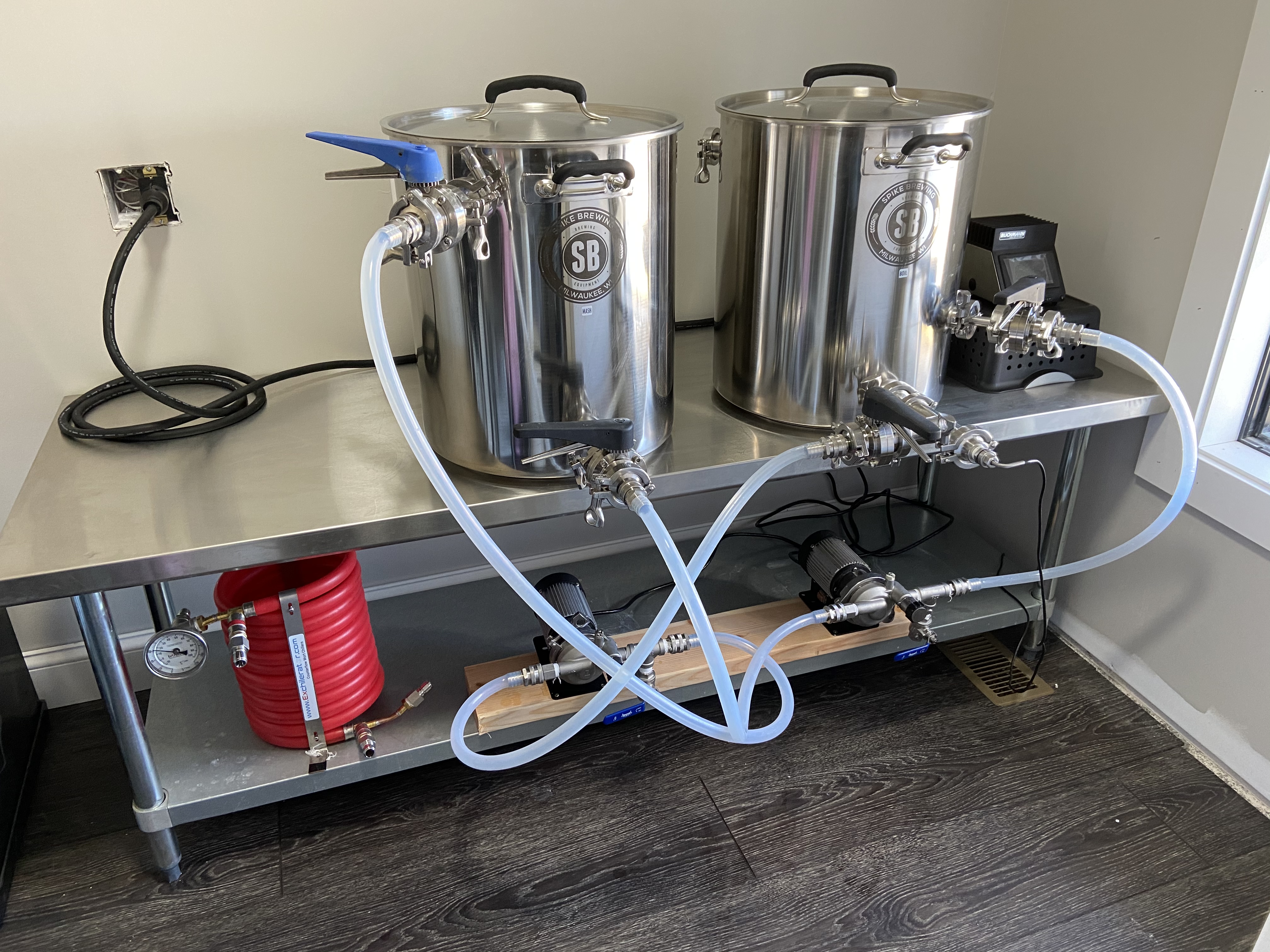
So I am finally getting closer to getting my indoor electric brewery working. Just need to finally get the circuit breaker installed in the panel. All other work is done. It’s been a long road that involved building a new house, lol.
The initial plan was to go with the idea from TexasWine above, 2 vessels plus and external germs coil via the exchilerator seen above. I had spike build 2 custom kettles and I am going to use a blichmann brecommander to control it all.
But now I am wondering if it just might be easier to do 2 vessel recirculating biab? I would have only 1 heating element in the boil kettle. Send wort through the bottle of the kettle, the pump and into the top of the mash tun. Then out of the bottom of the mash tun, through another pump and into the top of the boil kettle as indicated in the image above.
First of all any reason this would not work? Any downsides? I think this would be easier connections wise than adding the xchilerator to the mix. Although one thing I am confused on would be how much water to add to the boil kettle to start the process? In regular BIAB i use about 8.5 gallons for a 5.5 gallon batch. Wondering if this would be enough. I really just need to make sure there is enough wort covering the heating element in the boil kettle.
Thoughts?

































![Craft A Brew - Safale S-04 Dry Yeast - Fermentis - English Ale Dry Yeast - For English and American Ales and Hard Apple Ciders - Ingredients for Home Brewing - Beer Making Supplies - [1 Pack]](https://m.media-amazon.com/images/I/41fVGNh6JfL._SL500_.jpg)























